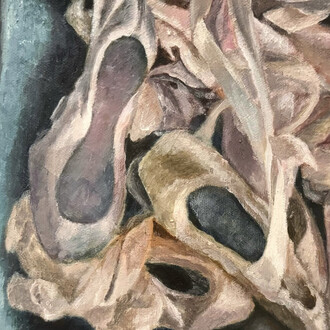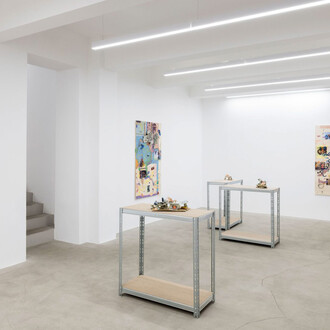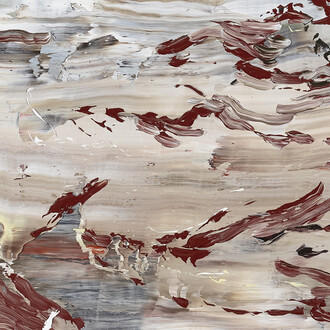I thought that a man might be an enemy of other men, of other moments of other men, but not of a country: not of fireflies, of words, of gardens, of streams, of sunsets.
(Jorge Luis Borges, The garden of forking paths, Finzioni, 1944)
The exhibition brings together three emerging artistic voices who share a common pull toward the invisible, the intangible, the teeming. That undefined point where the real and the ordinary, memory and time, light and darkness merge—opening up a space for transformation and multiplicity.
This inner sensation is transposed into an external environment, into the intricate garden of forking paths made of times and spaces branching out in every direction. Within this labyrinth, all of humanity is welcomed, wandering together. As abstract perceivers of the world, the three artists embrace the concept of simplicity, the value of collective memory, and preserve the silent contemplation often carried over from childhood.
Ish explores landscapes that seem familiar at first glance, but are rendered uncanny through a subtle sense of displacement. His figures, isolated and suspended between dream and reality, appear to be searching for inner silence amid the noise of change. It is a dreamlike drift, where the everyday becomes distorted, revealing cracks and openings toward an elsewhere.
Lily looks to the past as a narrative resource. Her intensely stylized paintings, informed by British interwar painting, are inspired by the Galapagos affair—by that tension between nature and culture shaped by human needs. She stitches old stories with new threads, constructing a hybrid time in which memory is not nostalgia but living material for imagining alternative futures.
Martina entrusts light with the heart of her research, focusing on the human interplay with the mysterious ways in which it reveals itself. Man discovers and understands through his hands, and in her paintings this element becomes the meeting point between human nature and reality. Light may be strong and blinding, or gentle—as in her works inspired by Pasolini’s metaphor of the fireflies, where darkness is no longer something to fear, but becomes the space in which light can gently reveal itself.
















